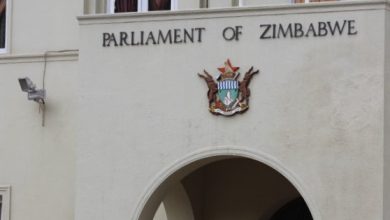Zim foreign currency ban: déjà vu?

The introduction of the Statutory Instrument 142 of 2019, which abolishes the use of the multicurrency system for local use and brought back the Zimbabwe Dollar as the only acceptable medium of exchange for local transactions has been met with shock and disbelief.
This shock move means all retailers, shops, supermarkets, franchises that were charging goods and services mostly in US dollar are to charge in Zimbabwean dollar, which under this instrument is at par with the local fiat currency – the RTGS Dollars.
Zimbabwe officially adopted the multi-currency system in February 2009 following high demand for cash fuelled by the hyperinflationary environment that saw cash shortages during 2008.
The multicurrency system allowed trade to be completed using major currencies, the US Dollar, Pound Sterling, Rand, and the Pula.
The RTGS Dollars were introduced in February 2019 where the government announced that its rate against other international currencies would be floated on the Interbank Foreign Exchange Market ending the previous 1:1 rate.
The US$/RTGS interbank exchange rate opened at 1:2.5 but as of June 24, the rate is now 1: 6.3 while at the parallel market the US$/RTGS is at 1:12.
However, analysts have criticised government for failing to address the root cause of Zimbabwe’s economic challenges opting to deal with symptoms that would invite more price hikes.
A financial adviser in Bulawayo, Ntokozo Tshuma, explained that SI 142 meant the government was suspending trading in USD meaning citizens not in the procurement sector could not use any forex.
“As long as you and I are not importing or exporting, we cannot use the forex. It can be used by those who are procuring or for those who have nostro accounts and want to deposit or request forex to import,” he said.
Tshuma noted that the finance ministry did not elaborate whether it was revaluing the RTGS$.
“Will the RTGS$ be evaluated to the parallel market rate and we have to know what this transition means to the value of the Zimbabwe Dollar. At present we are not printing any new paper and what the government did before was put the bond notes, RTGS under one blanket – the RTGS$ currency, which means they could also blanket the RTGS$ into the Zimbabwe Dollar but we are still waiting to hear the implication of SI 142 to the current rate,” he quipped.
There is also likelihood that the parallel market would continue and that retailers would also revalue their prices at the current prevailing rate of the parallel market, Tshuma said.
“If the US/RTGS exchange rate at the parallel market is 1:10, the retailer will simply multiply their price by 10. If it is not going to be profitable, the retailers will withdraw their goods, resulting in shortages.”
Economics lecturer at the Bindura University of Science Education, Dr Felix Chari said the move would cause more price increases.
“The increases are not just going to be once but will be in series’ as goods and services will increase daily. Those retailers and others receiving payments in local RTGS$ will have to put a markup in their products to lessen the risk of inflation,” he said.
D Chari noted it did not make sense to have such an instrument as the problem was not the use of foreign currency but the issue of trading in the informal market.
“It is the informal market were people trade their US Dollars, Rands or Pula. The major issue is people are still going to continue trading in the informal market and if not addressed, retailers will peg the RTGS$ price at the rate of the US dollar that is trading informally,” he said.
However, critical studies scholar, Khanyile Mlotshwa argued this was a good move that would end black market speculation.
“In Zimbabwe we have lived under speculation for a long time. Anything that ends speculation is welcome. What is driving prices up is speculation tied to the black market. If the government rids of the currency black market, there will be no reason to hoard the Zimbabwean currency because it cannot work elsewhere except locally.
“But as long as people can speculate with it in the black market, it will always push inflation and prices up. Now the government can face businesses on their own and try to understand why they are charging these crazy prices.”
President of the Confederation of Zimbabwe Industries (CZI), Henry Ruzvidzo said he had not yet come across the contents of the statutory instrument and could not comment further.
Analyst Thomas Sithole concurred and pointed out the introduction of SI 142 was not going to address the plummeting economy but rather a sign government was clueless on solving the economic challenges.
“I think the government has run out of ideas to curb the runaway inflation and has decided to use the last card they had in their bag of tricks by banning other currencies for local trade. This is not going to address the plummeting economy because they are not addressing the fundamentals of the problem but rather are tinkering with the symptoms.
“Most suppliers receive their goods and commodities from outside and that’s what has sustained the local trade. This will lead to a shortage of goods and soon we are likely to see empty shop shelves,” he said.
Lawyer, Fadzai Mahere posted on her twitter timeline that the SI 142 violated the constitution.
“The regulations are unconstitutional as they are ultra vires the Reserve Bank of Zimbabwe Act which permits trade in forex – not that they care (in reference to authorities),” she noted.





